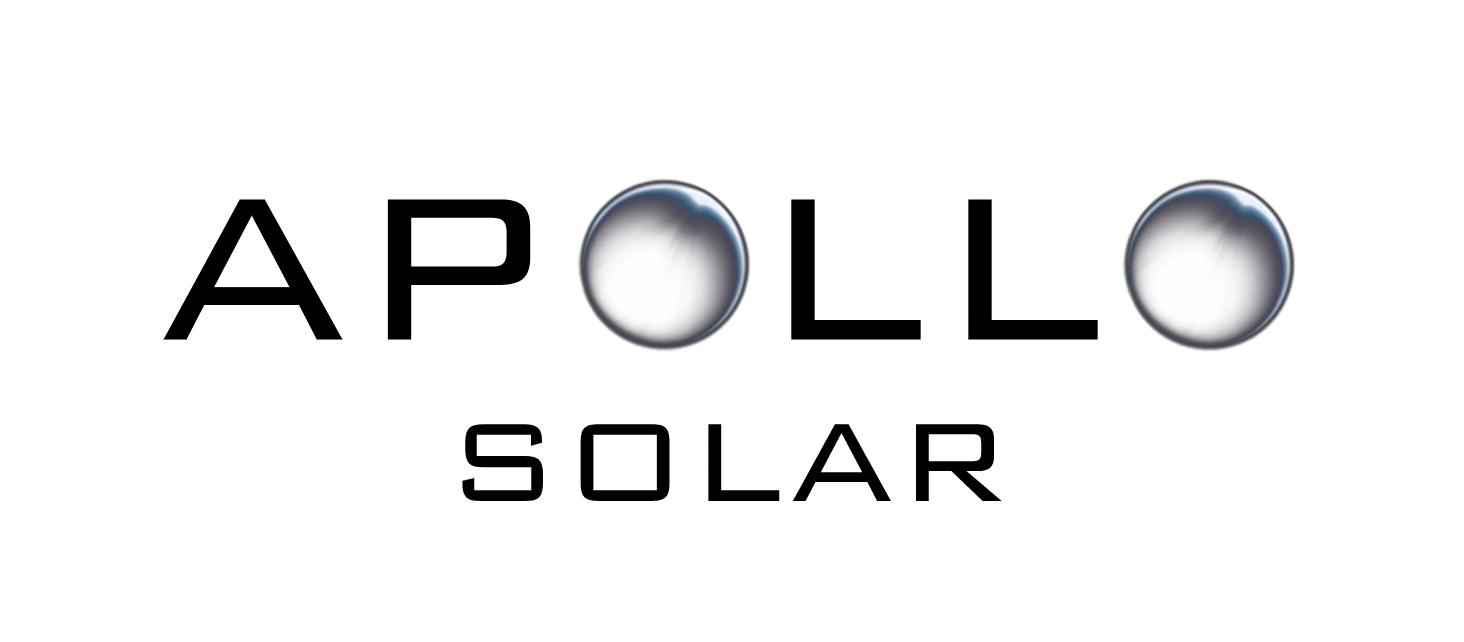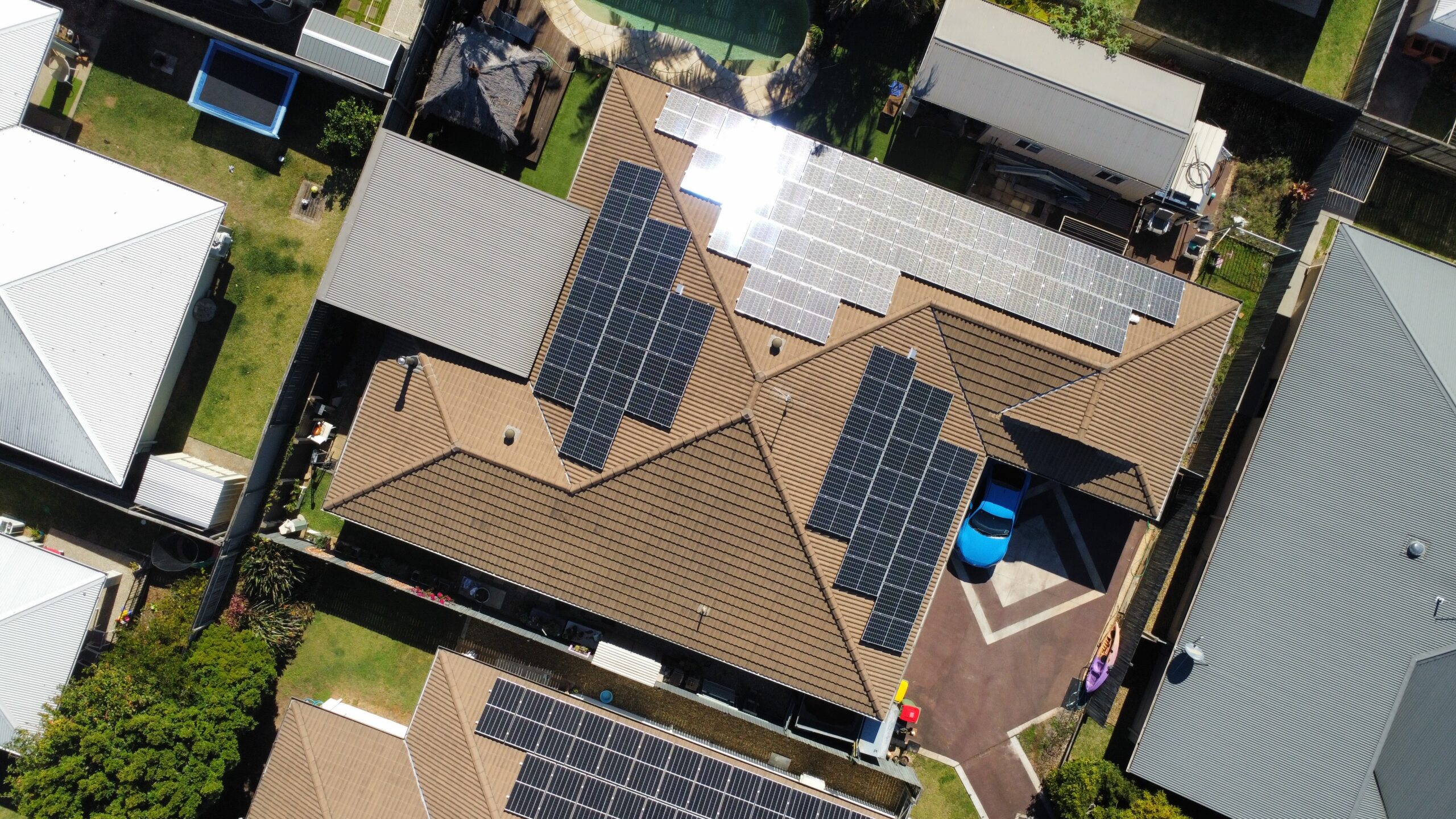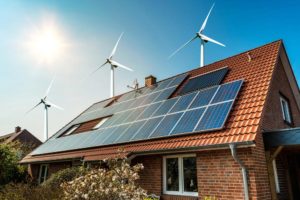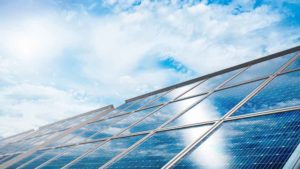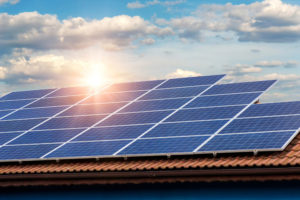Panel level optimisation is a newer technology in the field of solar energy that provides several benefits compared to traditional string inverter systems and cell optimisation systems.
One of the main advantages of panel level optimisation is its ability to increase the overall energy production of a solar installation. In traditional string inverter systems, the energy production of the entire string can be compromised if even a single panel is underperforming. However, with panel level optimisation, each individual panel can be optimized independently, maximizing the overall energy output.
Another benefit of panel level optimisation is the usage of bypass diodes. In traditional string inverter systems, a single bypass diode is typically used for the entire string. However, in panel level optimisation, each panel has its own bypass diode, allowing for better fault tolerance and reducing the chances of energy losses due to shading or degradation.
Furthermore, panel level optimisation can also extend the lifespan of solar panels. By ensuring that each panel operates at its maximum efficiency, it reduces the stress on the entire system and reduces the likelihood of hotspots or other issues that could lead to panel degradation.
In conclusion, panel level optimisation offers significant advantages over traditional string inverter systems and cell optimisation systems. These benefits include increased energy production, efficient bypass diode usage, and improved panel lifespan.
Explanation of shading issues in solar power systems
Shading issues in solar power systems can have detrimental effects on power production and may lead to the formation of hot spots. When solar panels are partially shaded, whether it is due to nearby structures, tree branches, or even leaves, it can significantly reduce the entire system’s overall efficiency.
Shading causes power production issues because it disrupts the flow of sunlight onto the panels. Solar panels are designed to convert sunlight into electricity, but when shade obstructs sunlight, the energy production is hampered. Even partial shading on just one panel of a series-connected system can impact the output of the entire array. This effect is known as the “weakest link” phenomenon, wherein the efficiency of the system is limited by the least productive panel.
Furthermore, shading can result in the formation of hot spots within the shaded panels. When a panel is partially shaded, the unshaded portion continues to produce electricity while the shaded portion turns into a resistor. This difference in electrical current generation can lead to localized heating within the shaded area, which may cause damaging stress on the panel’s components and decrease its lifespan.
To mitigate shading issues, it is crucial to locate solar panels in areas that receive full sun throughout the day. It is also recommended to regularly assess the surroundings for potential shading sources, such as nearby trees or structures, and consider pruning foliage if necessary. By ensuring that solar panels are exposed to maximum sunlight, power production can be optimized, and the risk of hot spots can be minimized.
Importance of selecting the right inverter for shaded panels
Selecting the right inverter for shaded panels is of utmost importance in any solar power system. Shading can significantly impact the overall performance and efficiency of solar panels, thereby reducing the amount of energy generated. This is where the role of an inverter becomes crucial. An inverter is responsible for converting the direct current (DC) generated by solar panels into alternating current (AC), which can be used to power household appliances and feed excess electricity back into the grid.
By choosing the right inverter that is specifically designed to address the challenges posed by shading, solar panel owners can maximize their energy production and optimize the performance of their system. This article will delve into the key reasons why selecting the right inverter for shaded panels is vital in order to achieve optimal solar energy generation and ensure a reliable and cost-effective solar power system.
Types of inverters
There are several types of solar inverters used to convert the DC (direct current) power generated by solar panels into AC (alternating current) power that can be used in homes and businesses. Three commonly used types of inverters are string inverters, microinverters, and power optimisers.
String inverters are the most common type of solar inverters and are commonly used in residential and small commercial installations. They are connected to multiple solar panels in series, forming a “string” of panels. These inverters receive the combined DC power from the string of panels and convert it into AC power. They are cost-effective and relatively simple to install and maintain.
Microinverters, on the other hand, are installed on each individual solar panel. Unlike string inverters, microinverters convert the DC power from each panel into AC power independently. This means that each panel operates at its maximum efficiency, regardless of shade or other issues affecting the overall string of panels. Microinverters also offer detailed performance monitoring for each panel and are considered to be more reliable than string inverters.
Power optimisers are a hybrid between string inverters and microinverters. They are installed on each panel, similar to microinverters, but they work in conjunction with a central string inverter. Power optimisers optimize the DC power output from each individual panel before it reaches the central inverter, allowing for increased energy production and panel-level monitoring, similar to microinverters.
In summary, string inverters are connected to a string of solar panels in series, microinverters are attached to each individual panel, and power optimisers work with a central inverter to optimize panel-level performance. Each type has its own advantages and is chosen based on the specific needs and requirements of the solar installation.
Overview of string inverters, micro-inverters, and power optimizers
String inverters, micro-inverters, and power optimizers are all types of solar inverters used in photovoltaic (PV) systems. They play a crucial role in converting the DC electricity generated by solar panels into usable AC electricity for the grid or residence.
String inverters are the most common type of inverter used in solar installations. They are connected in series with multiple solar panels, forming a string. The DC electricity generated by the panels flows through these inverters, which convert it into AC electricity. String inverters are suitable for large-scale installations with uniform roof conditions, where the panels are in close proximity and are not subjected to shading or mismatched orientations. They are cost-effective and have a high efficiency rate, making them a popular choice for many solar projects.
Micro-inverters, on the other hand, are installed on each individual solar panel, converting the DC electricity at its source. Unlike string inverters, micro-inverters operate independently of each other, allowing for more flexible panel orientations and better performance, especially in situations where shading is prevalent. They are ideal for residential and small-scale installations, as they provide maximum energy harvest from each panel and allow for panel-level monitoring and performance optimization.
Power optimizers are a hybrid between string inverters and micro-inverters. They are installed at the panel level but work in conjunction with a central string inverter. Power optimizers optimize panel performance and mitigate the effects of shading or mismatched orientations by maximizing energy harvest at the individual panel level. They are suitable for installations where there are slight variations in panel output due to shading or uneven roof conditions.
Each technology has its own set of advantages and considerations. String inverters are cost-effective, efficient, and simple to install, but their performance can be compromised if panels are affected by shading or mismatched orientations. Micro-inverters offer panel-level optimization and monitoring, but they are more expensive and may require additional maintenance. Power optimizers combine the benefits of both micro-inverters and string inverters, but they also come at a higher cost.
An understanding of the differences and applications of string inverters, micro-inverters, and power optimizers is crucial when designing a solar installation. Factors such as roof conditions, shading, and cost considerations should be taken into account to determine the most suitable option for a specific project.
Pros and cons of each type in relation to shading issues
Shading issues can greatly impact the comfort, energy efficiency, and aesthetics of a space. Therefore, it is crucial to consider the pros and cons of each type of shading solution available. From traditional curtains and blinds to modern technological innovations like automated shades and exterior shading systems, each option has its own advantages and disadvantages. Exploring the pros and cons of each type will help individuals make informed decisions when it comes to addressing shading issues in their homes or offices.
String inverters
String inverters play a crucial role in converting the DC (direct current) electricity generated by solar panels into usable AC (alternating current) electricity that can power home appliances. They are responsible for the efficient transformation of solar energy into a form that can be used by households or fed back into the grid.
One key feature of string inverters is their ability to handle the energy conversion process for multiple solar panels connected in a series, known as a string. This setup enables cost savings by reducing the need for multiple inverters. However, a potential drawback of string inverters is their susceptibility to shading issues. If one panel in the string is shaded, it can significantly impact the energy production of the entire string.
To overcome shading issues and maximize energy production, power optimizers can be used in conjunction with string inverters. Power optimizers, which are installed at each individual solar panel, work by mitigating the shading impact on the overall string performance. They maximize energy harvest by allowing each panel to operate independently, thus avoiding the reduction in output caused by shading.
In conclusion, string inverters are essential components in the solar energy system, enabling the conversion of DC electricity to AC electricity for home appliances. While they are susceptible to shading issues, the use of power optimizers helps to overcome this obstacle, leading to an optimized energy production system.
How string inverters work in a solar panel array
String inverters are a vital component in a solar panel array. They play a crucial role in converting the direct current (DC) generated by the solar panels into alternating current (AC) that can be used for practical purposes.
In a solar panel array, multiple solar panels are connected in series circuits. This means that the positive terminal of one panel is connected to the negative terminal of the next panel, and so on. When connected in this manner, the voltage of each panel adds up, resulting in a higher total voltage output. However, the current remains the same across all panels in the series circuit.
The DC power generated by the solar panels is then fed into the string inverter. The primary function of the string inverter is to convert this DC power into usable AC power. The inverter accomplishes this by utilizing complex electronics, including transformers and power semiconductors, which convert the DC power to AC power of the required frequency and voltage.
It is important to note that shading or malfunctions in one solar panel within the series can significantly affect the performance of the entire string. This is because solar panels are connected in series circuits, and the current flow is limited by the lowest-performing panel. If one panel is shaded or malfunctions, it can create a bottleneck, reducing the overall performance and power output of the entire string.
Overall, string inverters are essential for converting DC power to AC power in a solar panel array. They ensure that the electricity generated by the solar panels can be utilized for various applications, while also maintaining the harmony within the string by managing the impact of shading or malfunctions on the overall system performance.
Performance of shaded panels with string inverters
The performance of shaded solar panels when paired with string inverters is a topic of great importance in the field of solar energy. Shading has a significant impact on the overall efficiency and output of a solar panel system, as it reduces the amount of sunlight reaching the photovoltaic cells. String inverters, on the other hand, are commonly used to convert the direct current (DC) generated by solar panels into alternating current (AC) that can be used to power homes and businesses.
Understanding how shaded panels perform with string inverters is crucial for optimizing the energy production and reliability of solar systems in shaded environments. In this article, we will delve into the various aspects of this topic, exploring the challenges posed by shading, the impact on overall system performance, potential mitigation strategies, and the latest technological advancements to overcome these issues.
Micro-inverters
Microinverters are small electronic devices that convert the direct current (DC) energy generated by each solar panel into alternating current (AC) power for use in homes and businesses. Unlike traditional string inverters that connect multiple solar panels in series, microinverters are installed on each individual panel, operating in a parallel circuit.
The key advantage of microinverters is that they optimize energy production at the level of each panel. In a string inverter system, if one panel is shaded or performing at a lower level, it affects the output of the entire string. However, with microinverters, each panel functions independently. This means that even if one panel is shaded or faces other issues, the rest of the panels can continue operating at their maximum capacity, resulting in optimized overall energy production.
Moreover, microinverters are particularly useful in partial shade conditions. As they operate independently, shaded panels do not negatively impact the performance of neighboring panels. This ensures that the energy output of shaded areas is not compromised, increasing the overall efficiency of the solar installation.
Additionally, microinverters offer the advantage of monitoring the productivity of each panel separately. By using monitoring software, users can track the performance of each individual panel, allowing for easy identification of any potential issues. This level of monitoring provides valuable insights into system performance and aids in identifying problems promptly, resulting in improved maintenance and increased longevity of the solar installation.
In summary, microinverters offer several advantages compared to standard string inverters. Their ability to optimize energy production at the individual panel level, handle partial shade conditions effectively, and enable monitoring of each panel separately make them a popular choice for solar installations.
How micro-inverters work at the panel level
Micro-inverters are innovative devices that work at the panel level to optimize electricity output in solar panel systems. Unlike traditional string inverters that are connected to multiple panels, micro-inverters are attached directly to individual solar panels. This allows for individual optimization of electricity output, meaning that each panel operates at its maximum potential, regardless of shading or performance issues in other panels.
The process of connecting micro-inverters directly to solar panels is relatively straightforward. Each micro-inverter is mounted on the back of a panel and connected directly to its circuitry. This setup ensures that the energy generated by each panel is converted to AC power right at the source, as opposed to relying on a central inverter located further away. As a result, the DC current generated by the solar panel is instantly converted into usable AC electricity.
Furthermore, when micro-inverters are connected in parallel, they operate at a shared voltage and add their individual currents. This parallel connection allows for easier system expansion, as additional panels can simply be equipped with their own micro-inverters and connected to the existing array. The shared voltage ensures that the micro-inverters work together harmoniously, while the added current from each individual unit enhances the overall system capacity and efficiency.
In conclusion, micro-inverters revolutionize solar panel systems by enabling individual optimization of electricity output. By connecting directly to the panels, micro-inverters convert DC current to AC power at the source, maximizing energy generation. When connected in parallel, micro-inverters share voltage and add their currents, allowing for easy expansion and enhanced system capacity.
Benefits of using micro-inverters for shaded cells
When it comes to solar energy, shaded cells can pose a challenge as they can significantly decrease the overall efficiency of a solar panel system. However, advancements in technology have led to the development of micro-inverters, which offer a solution to this problem. Micro-inverters are small electronic devices that are integrated into each individual solar panel and convert the DC power generated by the panel into AC power. In this article, we will explore the benefits of using micro-inverters for shaded cells, including increased energy production, improved system reliability, and enhanced flexibility in panel design.
Power optimizers
Power optimizers are devices that enhance the efficiency of solar PV systems by individually optimizing the power output of each solar panel. Compared to microinverters and string inverters, power optimizers offer a higher level of cost efficiency. While microinverters require an individual inverter for each solar panel, power optimizers work in conjunction with a central inverter, reducing the upfront cost of the system. Additionally, power optimizers offer higher efficiency compared to string inverters, as they prevent energy losses caused by shading or panel mismatch.
One of the main advantages of power optimizers is their ability to provide individual panel monitoring. This means that if any panel is underperforming, it can be easily identified and addressed, ensuring optimal system performance. This monitoring capability also enables easy detection of any potential issues or faults within the system, thereby increasing reliability.
However, power optimizers do have certain limitations. Firstly, they can be more expensive than string inverters, especially for smaller-scale installations. Secondly, power optimizers consume some amount of energy themselves, resulting in a slight reduction of overall system efficiency. Lastly, since power optimizers operate at a higher voltage than microinverters, there is a higher risk of electrical arcing and potential short-circuit issues, which may impact system reliability.
Despite these limitations, power optimizers offer numerous advantages such as increased efficiency and individual panel monitoring, making them a popular choice in many solar PV installations.
Functionality of power optimizers in maximizing power output
Power optimizers play a crucial role in maximizing power output in solar photovoltaic (PV) systems. These devices are installed at the panel level and help boost the efficiency of the overall system.
The primary functionality of power optimizers is to regulate and optimize the current flowing through each solar panel. By individually tracking the maximum power point (MPP) of each panel, power optimizers ensure that the panels operate at their peak efficiency, even when they are exposed to varying shading conditions or degradation over time. This constant monitoring and optimization result in an overall increase in the power output of the system.
Power optimizers also serve as a key component in systems with a central inverter. They collect the DC power generated by each panel and optimize it before sending it to the central inverter. This optimization allows for higher efficiency in the conversion of DC power to AC power by the central inverter. By reducing losses and mismatches in the system, power optimizers contribute to achieving a more effectively operating solar PV system.
One of the prominent advantages of power optimizers over traditional string inverters is that they enable individual panel monitoring. This means that any issues or inefficiencies specific to a particular panel can be easily identified and addressed, improving the overall system’s performance and reducing maintenance costs. Additionally, power optimizers offer higher efficiency compared to microinverters, as they optimize the current flow at the panel level rather than individual module level.
Power optimizers play a crucial role in maximizing power output in solar PV systems. By optimizing the current flow and sending it to a central inverter, power optimizers increase overall system efficiency. Their ability to monitor individual panels and their higher efficiency distinguish them from string inverters and microinverters.
Suitability for partial shade conditions
Solar panels are typically designed to operate optimally under direct sunlight. However, in partial shade conditions where some areas of the solar panel array are shaded, their performance can be significantly affected. Shading can occur due to nearby buildings, trees, or even leaves and debris on the panels themselves.
In such situations, the efficiency of the solar panel array can be compromised as shaded panels can reduce the overall output of the system. This is because when one panel is shaded, the others connected in series are also affected, resulting in reduced energy production.
To optimize solar panel arrays in partial shade conditions, micro inverters or optimizers can be employed. These devices are placed on each individual solar panel, allowing them to perform independently of each other. Micro inverters convert DC power from each panel into AC power directly at the panel itself, eliminating the negative effects of shading. Optimizers, on the other hand, maximize the output of each panel by allowing them to operate at their maximum power point, even when shaded.
Several options are available in the market that offer micro inverters or optimizers. Enphase is a popular brand known for its micro inverter systems that enhance solar panel performance in shaded conditions. Tigo and SolarEdge also offer optimizers that allow for panel-level optimization. SMA Shadefix is another notable option that combines both micro inverters and optimizers in one system.
Panel-level optimization, whether achieved through micro inverters or optimizers, offers multiple benefits. It maximizes energy production by ensuring that each panel operates at its full potential, even under partially shaded conditions. It also allows for scalable installations, reducing design constraints and enabling flexibility in array configurations.
In conclusion, partial shade conditions can have a significant impact on the performance of solar panel arrays. However, with the use of micro inverters or optimizers, this issue can be effectively addressed, ensuring a higher energy yield and improved system efficiency.


